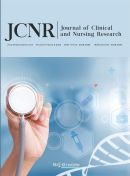Abstract
Objective: To investigate the etiological characteristics, clinical manifestations, and early identification methods of neonatal brain abscess. Methods: The baseline characteristics, clinical manifestations, and laboratory results of 12 neonatal brain abscess cases were retrospectively analyzed. Results: The clinical manifestations were fever, convulsion, and lethargy. A small number of them had respiratory and circulatory failure. The diagnosis made was based on imaging examination. All 12 cases were confirmed by cranial enhanced computed tomography (CT) or magnetic resonance imaging (MRI). Blood cultures of 9 cases were positive, with Escherichia coli in 6 cases, ?-hemolytic Streptococcus in 1 case, methicillin-resistant Staphylococcus aureus in 1 case, and Enterococcus faecium in 1 case. However, only 3 of them had positive cerebrospinal fluid (CSF) cultures. All the 12 neonates were treated with antibiotic therapy upon admission, with only 3 cases treated with surgery. Among them, 4 recovered and were discharged, while the remaining 8 discontinued their therapy. Conclusion: Escherichia coli is the most common pathogen of neonatal brain abscess in our study. The clinical manifestations of neonatal brain abscess are atypical, and the prognosis is poor. Respiratory and circulatory failure in children with intracranial infection may indicate the presence of brain abscess. For children with suspected brain abscess, cranial enhanced CT or MRI should be performed as soon as possible to make an early diagnosis. The prevention of brain abscess should be prioritized; neonates with sepsis or meningitis should receive prompt and strong antibiotic therapy in an effort to prevent the development of brain abscess.
References
Li Q, Hua Q, 2015, Clinical Characteristics and Risk Factors of Severe Encephalitis Complicated with Respiratory Failure in Children. Journal of Medical College of Qingdao University, 51(5): 579–582.
Cai J, Wu J, Bao K, 2007, Clinical Analysis of 43 Cases of Brain Abscess in Children. Chinese Journal of Practical Pediatrics, 22(7): 540–541.
Mameli C, Genoni T, Madia C, et al., 2019, Brain Abscess in Pediatric Age: A Review. Childs Nerv Syst, 35(7): 1117–1128.
Lee CG, Kang SH, Kim YJ, et al., 2010, Brain Abscess in Korean Children: A 15-Year Single Center Study. Korean J Pediatr, 53(5): 648–652.
Pareek P, Gupta B, Chetan C, et al., 2020, Burkholderia cepacia Brain Abscess in a Term Neonate. Indian J Pediatr, 87(6): 478–479.
Oliveira RS, Pinho VF, Madureira JF, et al., 2007, Brain Abscess in a Neonate: An Unusual Presentation. Childs Nerv Syst, 23(2): 139–142.
Sidaras D, Mallucci C, Pilling D, et al., 2003, Neonatal Brain Abscess – Potential Pitfalls of CT Scanning. Childs Nerv Syst, 19(1): 57–59.
Arora P, Kalra VK, Pappas A, 2012, Multiple Brain Abscesses in a Neonate After Blood Stream Infection with Methicillin-Resistant Staphylococcus aureus. J Pediatr, 161(3): 563–563.E1.
Masand R, Ali A, Purohit A, 2015, Neonatal Brain Abscess: An Atypical Presentation. J Pediatr Neurosci, 10(3): 282–284.
Perez-Bovet J, da Silva-Freitas R, Puerta-Roldan P, et al., 2014, Brain Abscess as a Cause of Macrocephaly in a Newborn. Pediatr Neurol, 50(1): 121–122.
Qureshi UA, Wani NA, Charoo BA, et al., 2011, Klebsiella Brain Abscess in a Neonate. Arch Dis Child Fetal Neonatal Ed, 96(1): F19.
Huang J, Qi T, Zhang P, 2003, Neonatal Brain abscess (A Clinical Analysis of 7 Cases). Chinese Journal of Coal Industry Medicine, 6(10): 930–931.
Liang H, Wang D, Li W, et al., 2003, Neonatal Brain Abscess: A Report of 8 Cases. Hebei Medical Journal, 25(3): 202–203.
Biswas B, Mondal M, Thapa R, et al., 2014, Neonatal Brain Abscess Due to Extended-Spectrum Beta-Lactamase Producing Klebsiella pneumoniae. J Clin Diagn Res, 8(11): PD01–PD02.
Fu Y, Wang X, Cui H, 2019, Analysis of Etiology and Clinical Characteristics of Neonatal Community Acquired Pneumonia. Chin J Med, 54(02): 184–188.
Masand R, Ali A, Purohit A, 2015, Neonatal Brain Abscess: An Atypical Presentation. Journal of Pediatric Neurosciences, 10: 282–284
Zhang J, Mao J, 2012, Magnetic Resonance Imaging Characteristics of Neonatal Purulent Meningitis Caused by Different Pathogenic Bacteria. Chinese Journal of Contemporary Pediatrics, 14(7): 489–495.
He J, Xia C, Fu X, 2015, Advances in Imaging Diagnosis and Treatment of Brain Abscess. Shandong Medicine, 55(13): 104–106.
